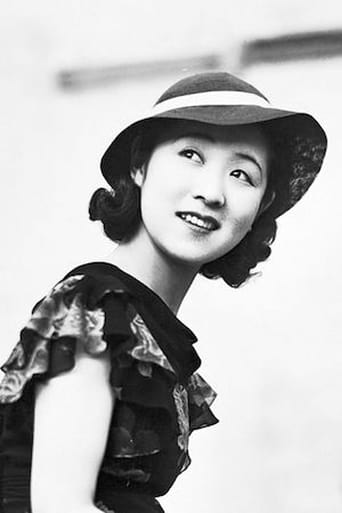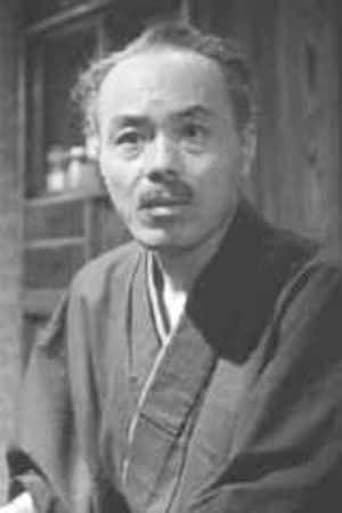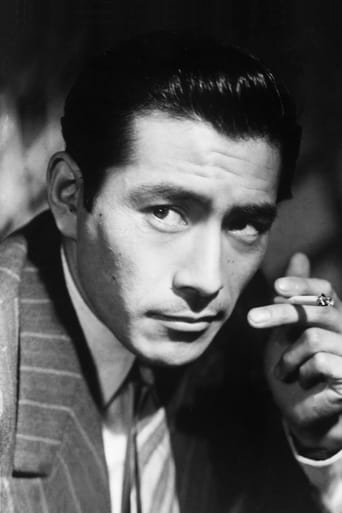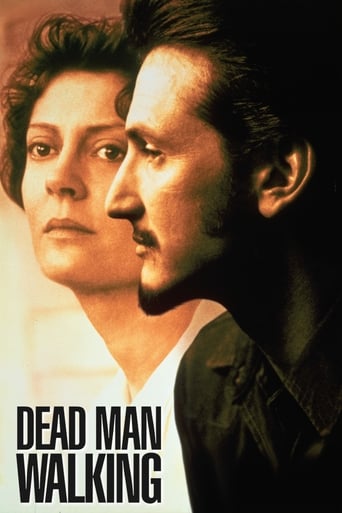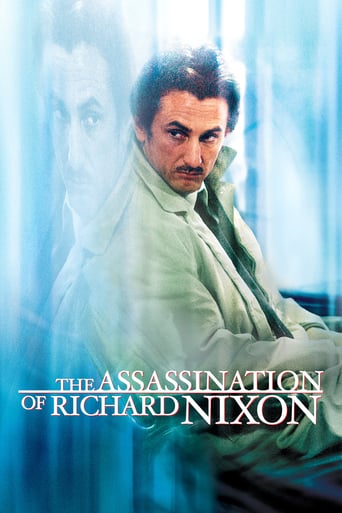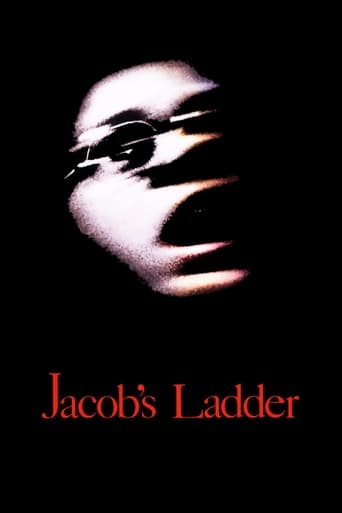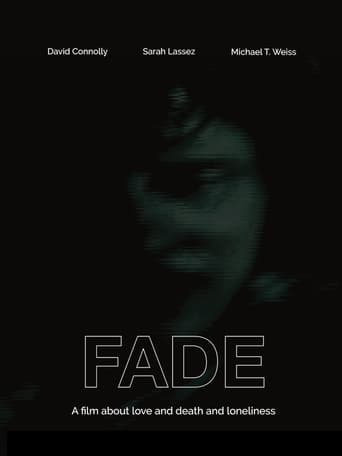
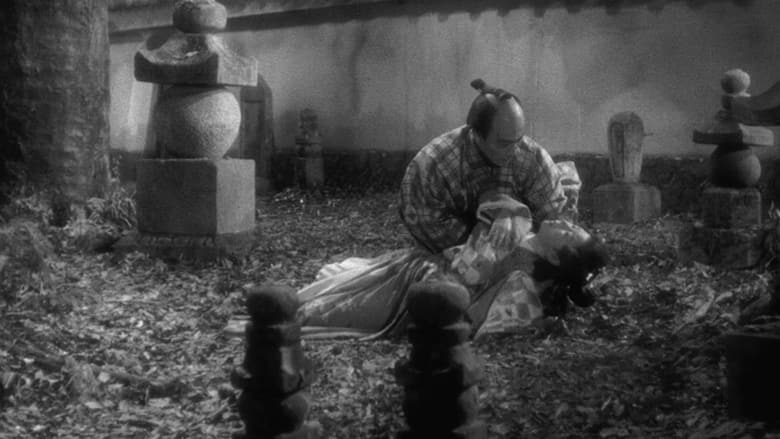
The Life of Oharu (1952)
In Edo Period Japan, a noblewoman's banishment for her love affair with a lowly page signals the beginning of her inexorable fall.
Watch Trailer
Cast


Similar titles
Reviews
The tale of a 17th century samurai's daughter.This film is known for its long takes and notoriously was filmed with no sound stage -- the cast and crew were working largely within a warehouse. They made it work, apparently, as the sound is as close to perfect as one could want.I love the theme of the samurai in Japanese films. Of course, no other country could tackle it, but I am surprised how many Japanese directors have returned to this part of their culture. And it always works.Some have said that the film tells a story that uses the experiences of a struggling courtesan to examine the issues of class and rigid hierarchy in Japanese society in the Edo period. Is this accurate? I am not sure. Mizoguchi was no stranger to class struggle, but how consciously he was working in metaphor is unknown to me.
Mizoguchi's empathy for female characters is legendary. The Life of Oharu is one outstanding example. One woman's journey from member of the imperial court to elderly streetwalker is narrated in exquisite, shimmering, painful style. Oharu (Kinuyo Tanaka) is seduced by a man below her station. Her crime is to love the man back unreservedly. That action becomes the catalyst for a series of degradations punctuated by false dawns, as Oharu's life spirals to rock bottom. And as bleak and depressing as that sounds, Mizoguchi's storytelling, combined with Tanaka's dignified portrayal, make this film cathartic, a tragedy with a small, life-affirming message at its heart. It is a cautionary tale to the follies of social mores, and the burden that women through the ages have to endure. More than that, it is a tale of one woman's dignity through the most humiliating of circumstances. Stunning.
An ageing prostitute, Oharu (Kinuyo Tanaka), walks slowly through the back streets of her patch, she's tired and cold and bemoans the lack of business, she gathers around a fire with her colleagues for some warmth and some chat. One of her colleagues asks her about her past as a courtesan, but emotionally scarred, Oharu is unable to discuss it and goes on her way. She enters a local temple, where there are many statues of Buddha's disciples, these faces bring back memories of her turbulent life, one in particular triggers flashbacks of better times .Once as a courtesan Oharu had enjoyed the splendour of fine things with her parents. One day Oharu is tricked into a meeting with a nobleman by his servant, Katsunosuke(Toshiro Mifune), once alone he comes clean and pledges his love for her, at first she spurns him because of their different social status, but then she pledges her undying love to him, but their tryst is stopped in its tracks by a court official who catches them together. Oharu and her family are banished into exile, Katsunosuke fares much worse and is beheaded for his crime. Now broke and desolate, her father threatens to sell her to make ends meet, however an envoy from Lord Harutaka Matsudaira spots her and offers her the opportunity of becoming the Lord's concubine, as his present wife is sickly and unable to bear him a child. She finally agrees and dutifully bears him the son and heir he requested. Contrivances and petty jealousies then conspire to see her thrown out of her new home right after the birth, this however is just the beginning of her tortuous labyrinthine passage through life .Winner of the Silver Bear at the 1952 Venice Film festival, The Life of Oharu is an adaptation of Saikaku Ihara's novel "Koshuku Ichidai Onna that follows familiar territory for the great Mizoguchi, who is perhaps best known for his tales of devastating loss and injustice, in particular when they are from the woman's point of view. Oharu is truly, an epic and compelling chronicle of a journey of brief highs and truly shocking lows for the main protagonist, Mizoguchi's film is a powerful critique of the Feudal class structure and how it unjustly destroyed many lives of ordinary people. Despite its Feudal setting it still feels very relevant and contemporary , its themes being timeless. The film is awash with elegance and is beautifully filmed by Yoshimi Hirano and Yoshimi Kono with all the flowing movement you might expect from the directors work, it gives life and symmetry to the wonderful period sets. The acting is also superb in its simplicity, some of their merest movements providing great power to the final product. Mizoguchi constantly plays with the viewers emotions without ever becoming preachy, just when you think Oharu has turned a corner, we are devastated by another unflinching twist of fate, its this pattern which gives the film an overall downbeat feeling, that shows Mizoguchi's mastery of the medium.
Japanese cinema was virtually unknown in the West prior to Akira Kurosawa's victory at the 1951 Venice Film Festival with RASHOMON (1950); its success spurred fellow director Kenji Mizoguchi (whose career was basically in the doldrums at that stage) on to complete a dream project of his. Even so, due to the scarcity of sound stages after WWII, this film was shot in a large warehouse which was later also used by Josef von Sternberg for his own Japanese venture, ANATAHAN (1953). Consequently, THE LIFE OF OHARU (itself awarded the Silver Lion at the following year's edition of the Venice Film Festival) became Mizoguchi's own breakthrough effort – despite having already been in the business for thirty years! Actually, it turned out to be the first of five consecutive works of his to compete for this coveted prize.Having been personally involved with them, the trials and tribulations of geishas was a favorite theme of the director's and THE LIFE OF OHARU would seem to be its cinematic apogee'; in fact, eminent film critic Jonathan Rosenbaum went so far as to call it "the most powerful feminist protest ever recorded on film". It was also the twelfth collaboration between Mizoguchi and his leading lady Kinuyo Tanaka (who even turned to directing films herself the following year, the first Japanese woman to do so – to her mentor's apparent chagrin!). Conversely, the brief, almost unrecognizable appearance of Toshiro Mifune (albeit in a pivotal role) marked his only stint in a Mizoguchi film. While its very subject matter makes it perhaps less immediately appealing than the Japanese film-maker's subsequent masterpieces, THE LIFE OF OHARU still emerges as an exceptional work in his distinguished canon (in spite of its being cluelessly awarded a measly **1/2 rating in Leonard Maltin in his "Film & Video Guide"!).The film is long and episodic – everything that can possibly go wrong for Oharu does: the daughter of a samurai serving in the Imperial palace, she falls for a lower class page. He's beheaded for violating the social code when they're caught together, while Oharu and her family are exiled. A servant of a lord arrives looking for a concubine and settles on the heroine; after bearing the lord's son, his clan banish her for draining his energy! She's consequently forced into prostitution by her highly-indebted father, but is dismissed for being too proud before long. Next, she's hired by a wealthy merchant who takes advantage of Oharu upon learning of her past – an action which incurs the wrath of his jealous wife. A period of happiness married to a fan-maker is cut short when he's murdered by thieves, whereupon she decides to become a nun; however, Oharu's expelled once again when caught seducing a textile merchant to pay off her debts! Now reduced to street begging, she's taken in by two prostitutes – but is laughed at by her customers for being old and ugly. Oharu is then visited by her mother with the news that she's been invited back into her son's clan – but the elders veto the idea and, because of her 'shameful' behavior, is only allowed one glimpse of him! At the end of the picture, we see her resuming a beggar's existence Oharu's emotional turmoil is brought vividly to life by Tanaka's magnificent central performance – the actress herself was 42 at the time but, given Mizoguchi's penchant for medium shots, she manages to convincingly get away with portraying a woman from the age of 18 through to 50 – as well as an excellent music score by Ichiro Saito. Despite a generally downbeat tone, the film is relieved occasionally by humorous passages (such as the fastidious specifications required in choosing the lord's mistress and the ultra-servile attitude of the host at the brothel towards extravagant customers). The circular nature of the narrative is also evoked in visual terms: the film's very opening sequence is re-enacted towards the end; besides, the image of a cat stealing off with the wig of the merchant's wife is echoed by Oharu's imitation of a growling feline when confronted by the scorn of her customers.Having missed out on a rare Sunday morning screening on Italian TV (in the original language, no less), I'd long considered purchasing the film on VHS but had discarded this plan in view of the fact that the full-length version is supposedly 148 minutes (against the 137-minute print on the VHS). Still, I couldn't pass it by any longer when the R2 DVD also presented the shorter cut (even if I didn't have to buy it); hopefully, Criterion will sooner or later release their own edition to go with the other Mizoguchis – UGETSU (1953) and SANSHO THE BAILIFF(1954). Unfortunately, 30 minutes from the end, my DivX copy froze and wouldn't proceed any further – so I had to hastily convert it to DVD-R (a highly time-consuming process) in order to finish viewing the film!


